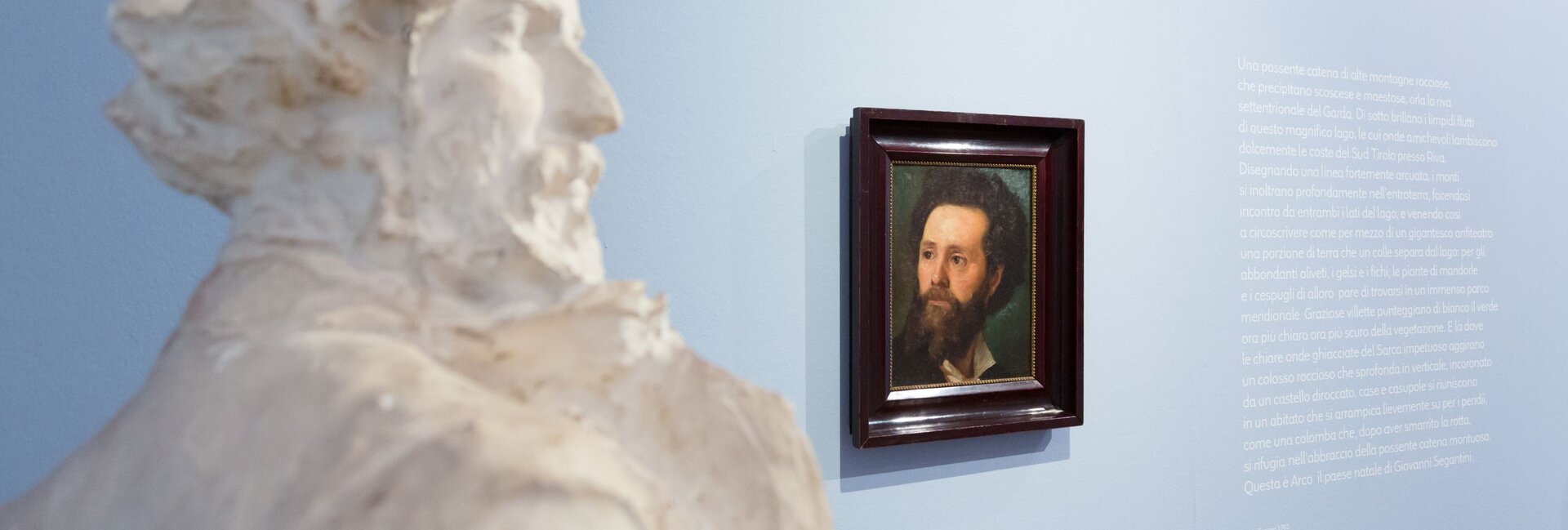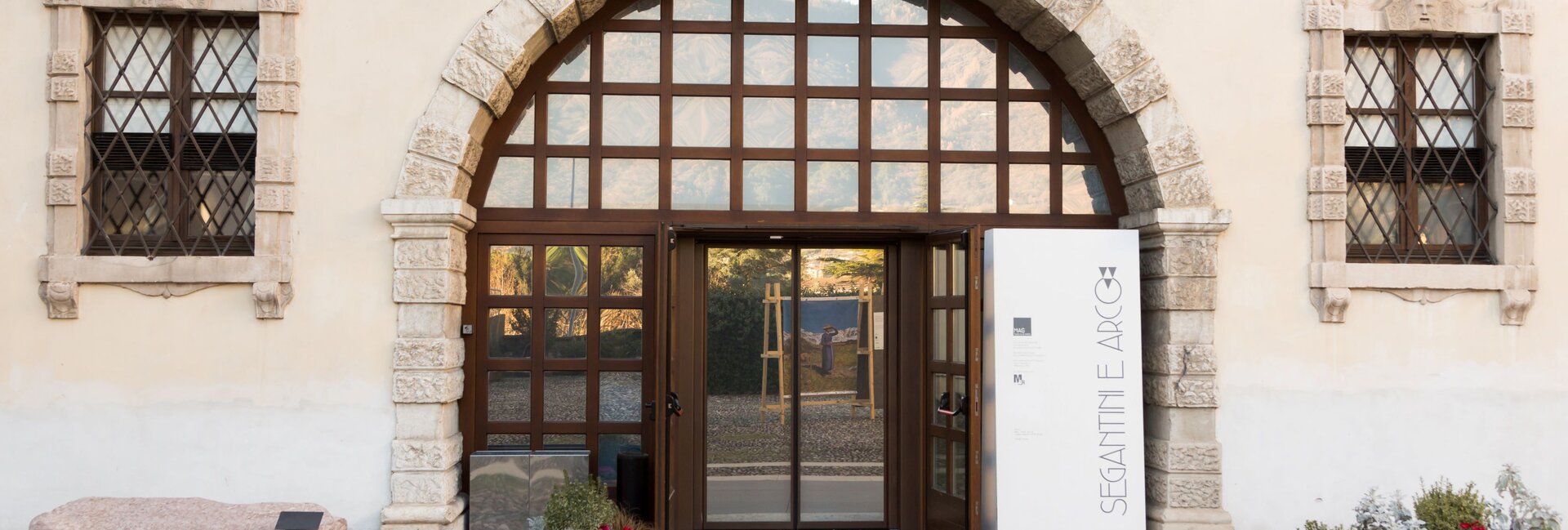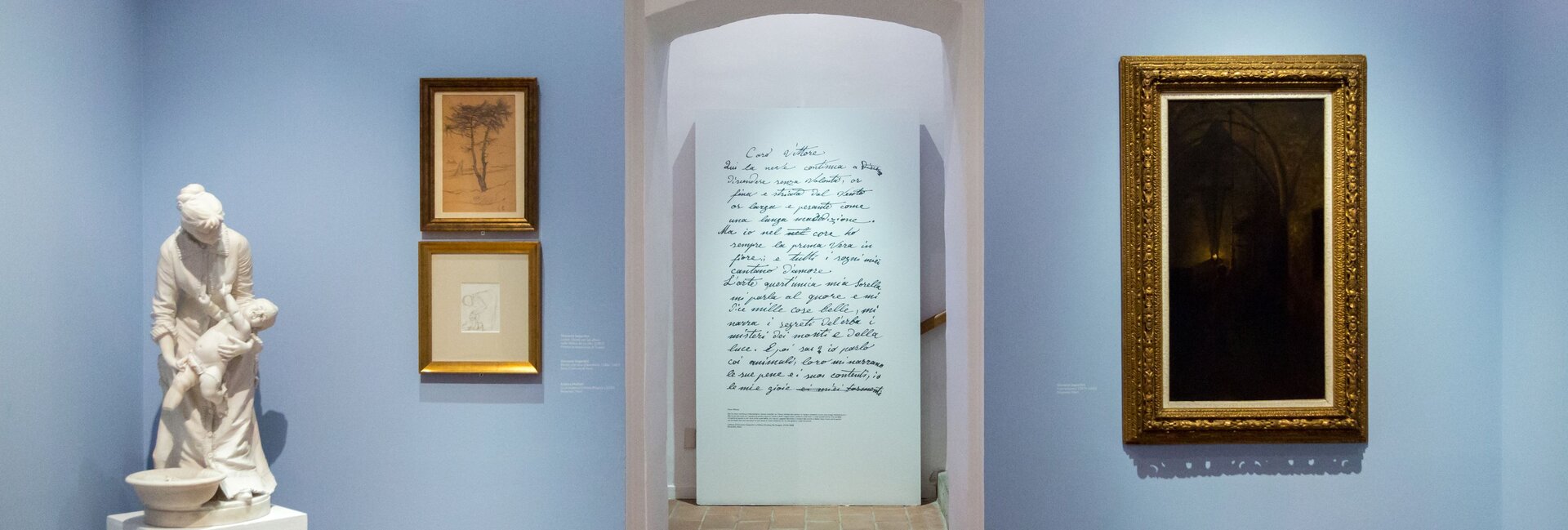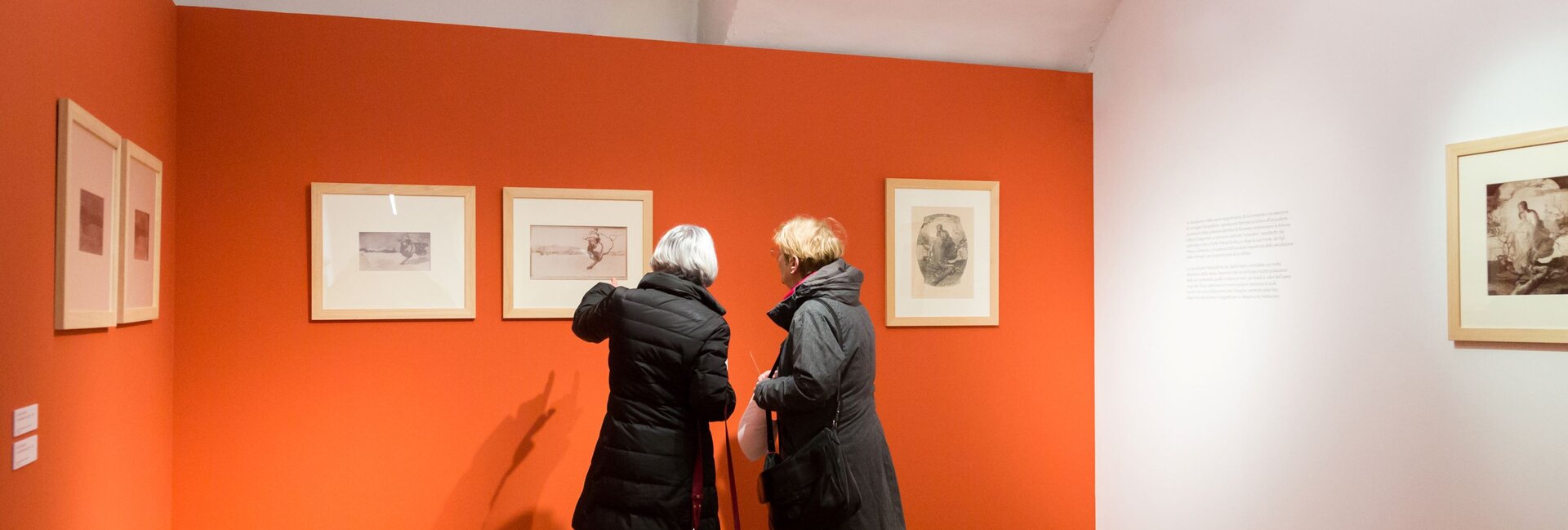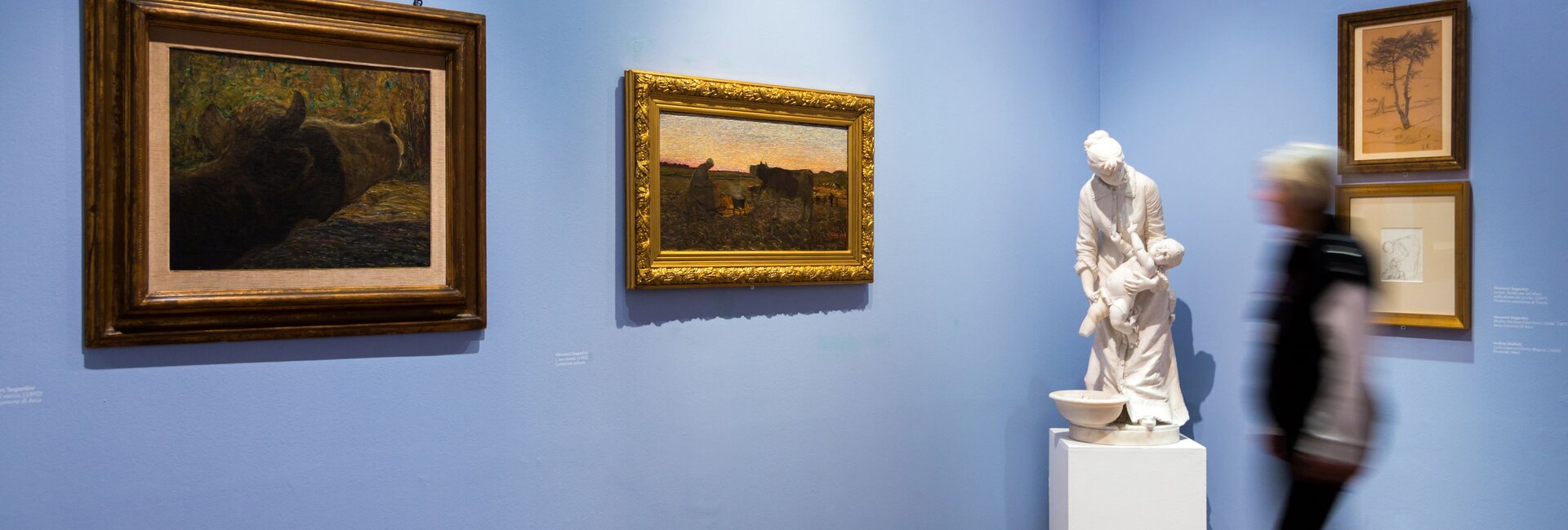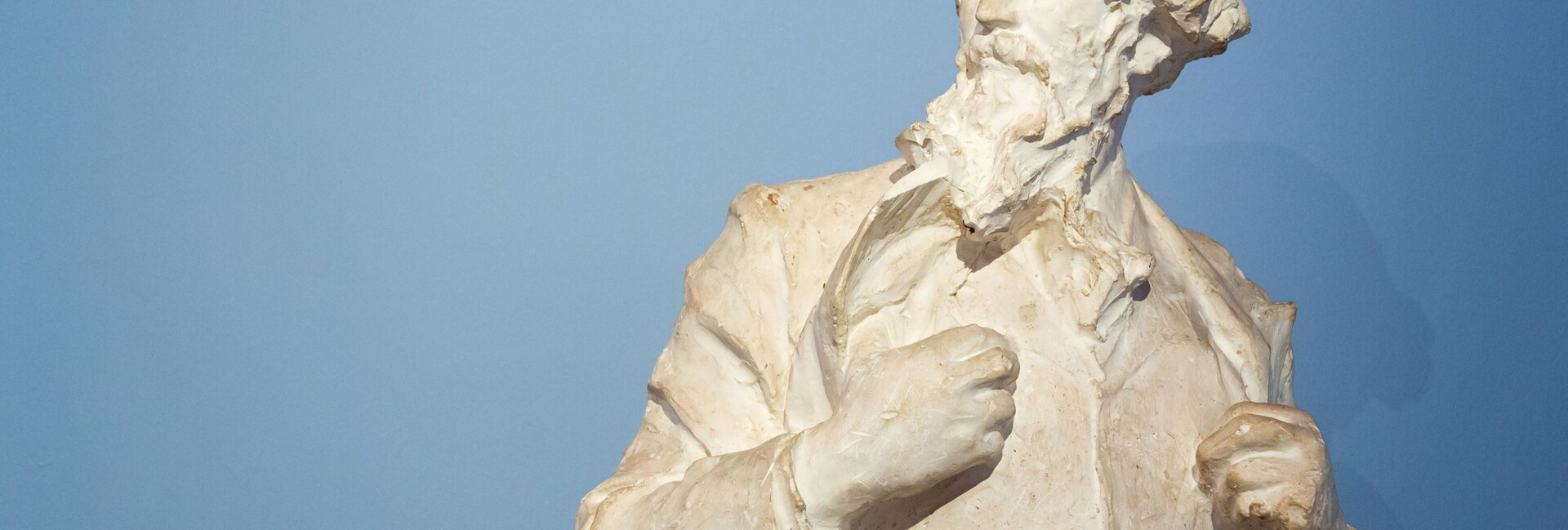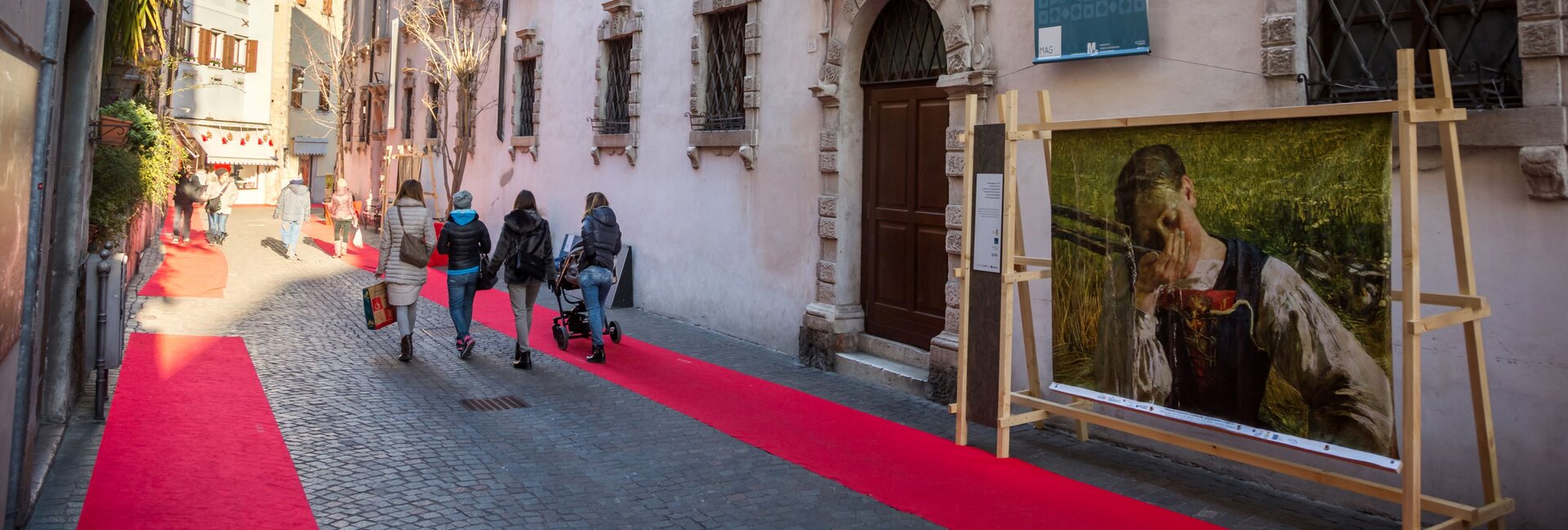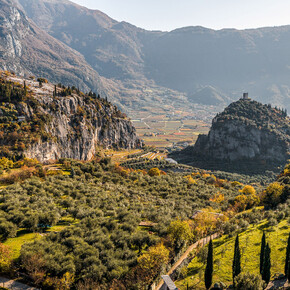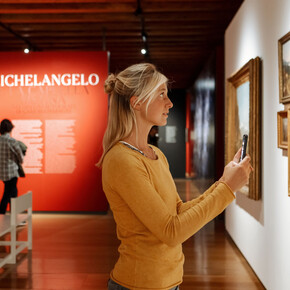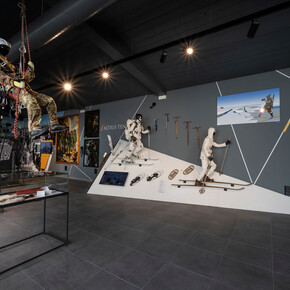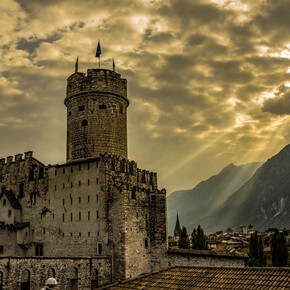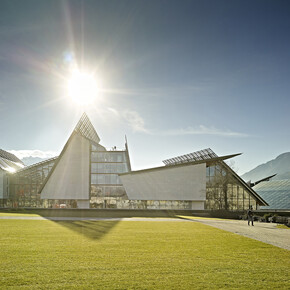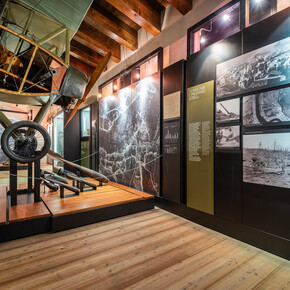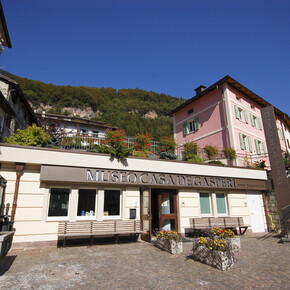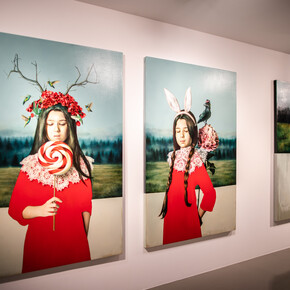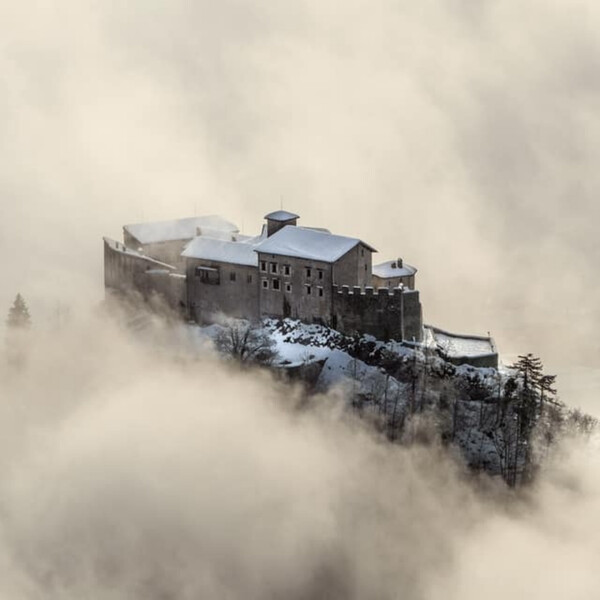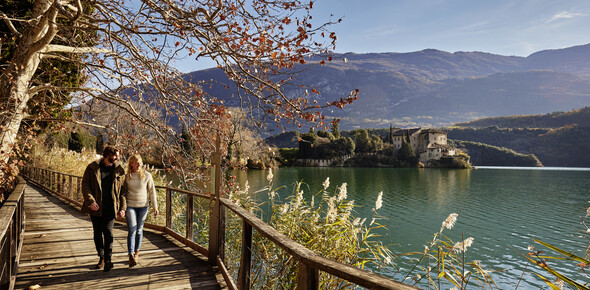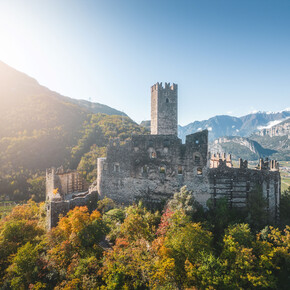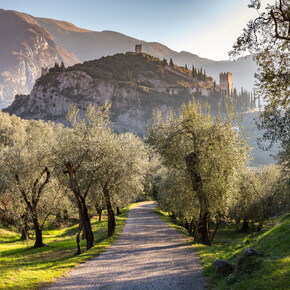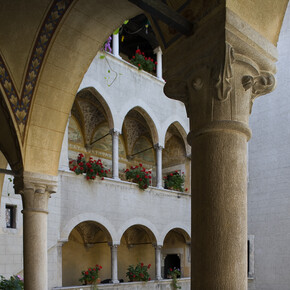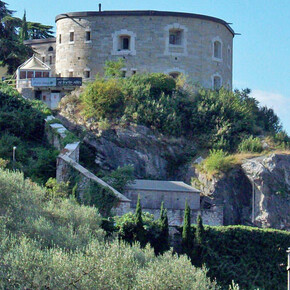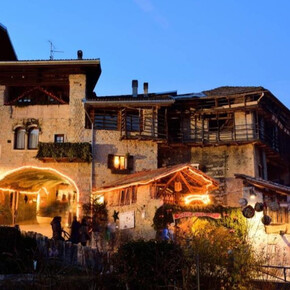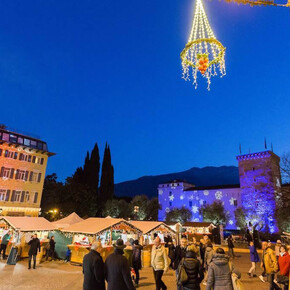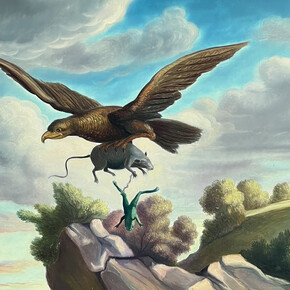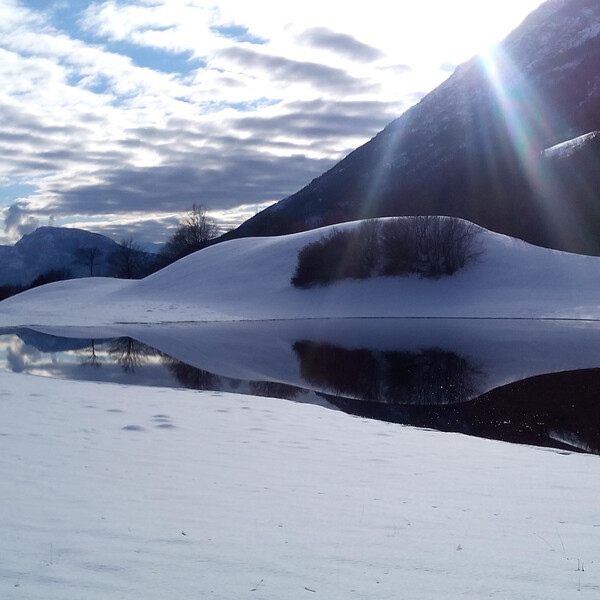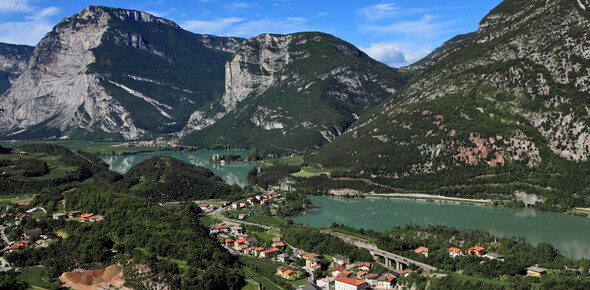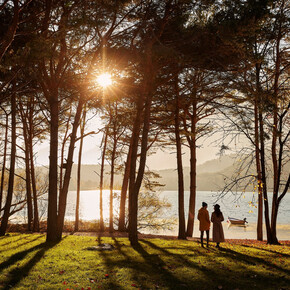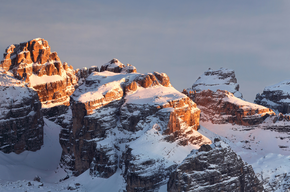Galleria Civica G. Segantini
The permanent exhibition is to be found in Palazzo Panni
- The beautiful 17th-century Palazzo Panni
- Segantini.map, an interactive workstation
The project The Galleria Civica G. Segantini of Arco, which presents an exhibition itinerary hosted in the 17th-century Palazzo Panni, now restored to the splendour of its original architecture, intends to serve as a research centre within a virtual network made up of the main institutions housing the works of Segantini and those scholars who have studied the artist.
The display
The display opens with the Segantini.map, an interactive workstation which allows visitors to access all the public collections around the world in possession of works by Segantini, to search through the sites of these museums and enjoy full-screen renderings of the masterpieces of the artist held in these collections.
The Segantini.doc are workstations using multi-touch technology to offer tools and materials that help to reconstruct Segantini’s artistic career, framing it within the contemporary cultural context of the artist. These workstations are surrounded by paintings, sculptures and paper-based works concerning Segantini and other artists from Trentino in the same era, with works from the collections of the Mart, the MAG and the Autonomous Province of Trento, brought together in order to honour the great artist born in Arco, but above all, in the commitment to support a project that brings together all the research potential concerning sources and documents from various archives, all revolving around a key word: Segantini.
Segantini and his contemporaries
Alongside the documents and images rendered by the touch tables, the exhibition itinerary features the works of Segantini belonging to the Mart, the Town Council of Arco and the Autonomous Province of Trento, as well as paintings, sculptures and paper-based works by Trentino artists like Andrea Malfatti, Eugenio Prati and Vittore Grubicy, who was the mentor of Segantini and Prati. Like Segantini, Prati and Malfatti were called upon to represent the figurative culture of the Trentino Region in the great national exhibitions of Milan, Turin, Florence and Rome (1883), and then Venice (1887).
Together with those by the Veneto artists Alessandro Milesi and Antonio Rotta, the works by these artists offer a glimpse of painting production dating to the same era as that of Segantini.
